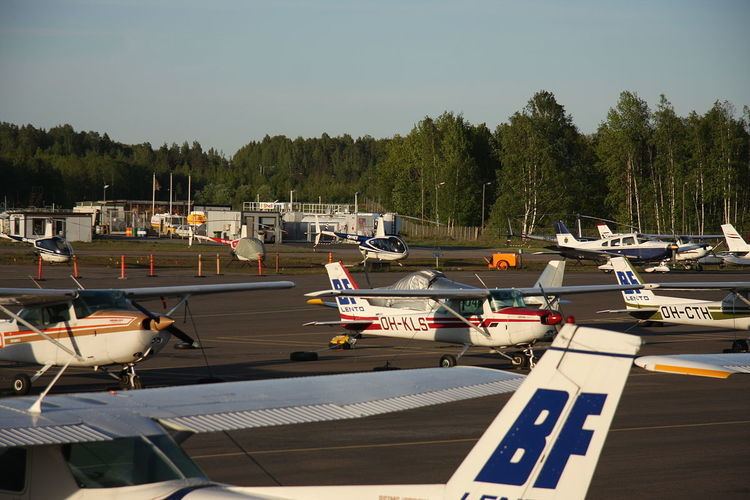 | ||
General aviation (GA) is the term for all civil aviation operations other than scheduled air services and non-scheduled air transport operations for remuneration or hire. General aviation flights range from gliders and powered parachutes to corporate business jet flights. The majority of the world's air traffic falls into this category, and most of the world's airports serve general aviation exclusively.
Contents
General aviation covers a large range of activities, both commercial and non-commercial, including flying clubs, flight training, agricultural aviation, light aircraft manufacturing and maintenance.
Europe
In 2003 the European Aviation Safety Agency (EASA) was established as the central EU regulator, taking over responsibility for legislating airworthiness and environmental regulation from the national authorities.
United Kingdom
Of the 21,000 civil aircraft registered in the UK, 96 per cent are engaged in GA operations, and annually the GA fleet accounts for between 1.25 and 1.35 million hours flown. There are 28,000 Private Pilot Licence holders, and 10,000 certified glider pilots. Some of the 19,000 pilots who hold professional licences are also engaged in GA activities. GA operates from more than 1,800 airports and landing sites or aerodromes, ranging in size from large regional airports to farm strips.
GA is regulated by the Civil Aviation Authority (CAA), although regulatory powers are being increasingly transferred to the European Aviation Safety Agency (EASA). The main focus is on standards of airworthiness and pilot licensing, and the objective is to promote high standards of safety.
General aviation in North America
General aviation is particularly popular in North America, with over 6,300 airports available for public use by pilots of general aviation aircraft (around 5,200 airports in the U.S., and over 1,000 in Canada). In comparison, scheduled flights operate from around 560 airports in the U.S. According to the U.S. Aircraft Owners and Pilots Association, general aviation provides more than one percent of the United States' GDP, accounting for 1.3 million jobs in professional services and manufacturing.
Regulation and safety
Most countries have authorities that oversee all civil aviation, including general aviation, adhering to the standardized codes of the International Civil Aviation Organization (ICAO). Examples include the Federal Aviation Administration (FAA) in the United States, the Civil Aviation Authority (CAA) in the United Kingdom, the Luftfahrt-Bundesamt (LBA) in Germany, the Bundesamt für Zivilluftfahrt in Switzerland, the Transport Canada in Canada, the Civil Aviation Safety Authority (CASA) in Australia, the Directorate General of Civil Aviation (DGCA) in India and Iran Civil Aviation Organization in Iran.
Aviation accident rate statistics are necessarily estimates. According to the U.S. National Transportation Safety Board, in 2005 general aviation in the United States (excluding charter) suffered 1.31 fatal accidents for every 100,000 hours of flying in that country, compared to 0.016 for scheduled airline flights. In Canada, recreational flying accounted for 0.7 fatal accidents for every 1000 aircraft, while air taxi accounted for 1.1 fatal accidents for every 100,000 hours. More experienced GA pilots appear generally safer, although the relations between flight hours, accident frequency, and accident rates are complex and often difficult to assess.
